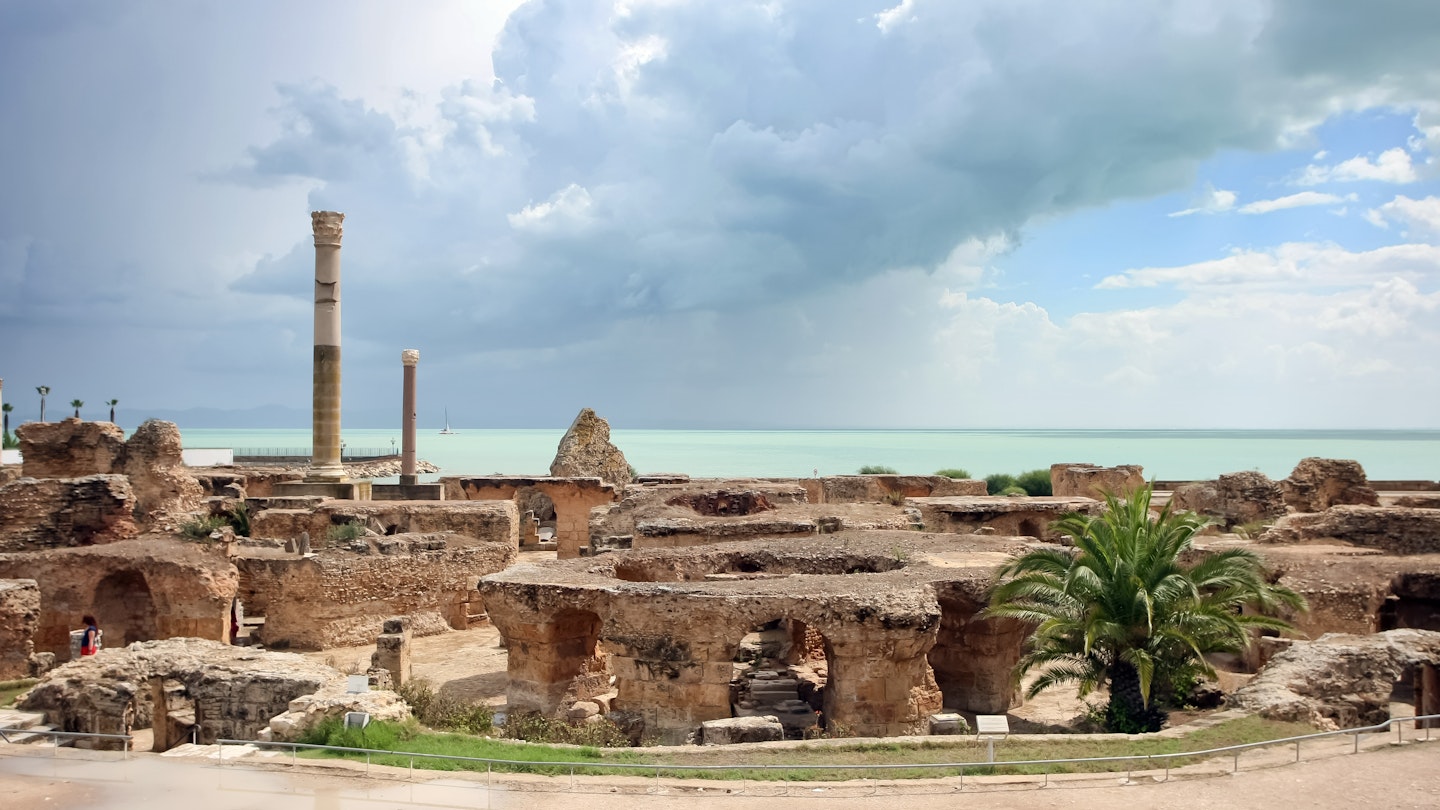The fallen city of Carthage now lies part-excavated among the exclusive whitewashed villas in one of Tunis’ swankiest suburbs, enveloped in legends. Once a cosmopolitan trading hub and a key maritime power in the Mediterranean, the well-connected Carthage was one of the wealthiest cities in the ancient world, inspiring poetry, mythology, and – of course – envy.
However, after repeated bloody clashes with their Roman rivals, the Phoenicians’ overgrown colony-turned-capital vanished at the hands of conquerors from the opposite side of the Mediterranean, who burned and rebuilt Carthage to their liking, ultimately enslaving the local population.
Carthage existed for over 500 years before the Romans took control in 146 BC, but due to its brutal destruction, very little remains of the original Punic capital. Nevertheless, the spectacular downfall of such a civilization continues to captivate modern minds. The UNESCO-listed Carthage Archaeological Park remains a popular highlight on Tunisia itineraries. Here’s what to expect during your visit.
Byrsa Hill and the Carthage Museum
Start your exploration by climbing Byrsa Hill. From this vantage point, you will gain an expansive perspective, taking in breathtaking views of the shimmering Gulf of Tunis and the cleverly designed Punic Ports. The design allowed the Carthaginian navy to see out to sea while remaining hidden from enemy ships. Among the ruins, you can find the remains of a Hannibal-era residential quarter from around the 3rd century BC, showcasing a well-preserved grid of streets that Carthaginians once walked.
At the summit, you will also discover the two-floor Carthage Museum. This museum houses archaeological fragments found throughout the site, including 4th-century BC stone sarcophagi and colorful mosaics. The 20th-century building was a former Catholic seminary and offers a nearby colonial French church, the deconsecrated L’Acropolium, showcasing a mix of Moorish, Byzantine, and Gothic architectural styles.
Antonine Baths
Among the most remarkable ruins at Carthage are the Roman Antonine Baths, constructed under Emperor Hadrian and completed during Antoninus Pius’s reign in the 2nd century AD. Nestled on the seaside, this expansive bath complex was the largest outside Rome, illustrating the city’s significance within the wider Roman empire. Visitors can mainly observe the foundations of the bathhouse, although the grass-covered arches and stone-hewn tunnels tell stories of the busy staff that once worked there.
A reconstructed 15m-tall column offers insight into the scale of the complex, highlighting the eight pillars that supported the massive frigidarium (cold room). Narrow passages connected the frigidarium with the tepidarium (warm room) and caldarium (hot room), maintaining the traditional Roman bathing experience.
Unfortunately, the Vandals destroyed the baths in 439 AD, and stones were later repurposed by Arabs to build Tunis. The baths relied on water from the Roman-constructed Zaghouan Aqueduct, of which remnants can still be seen northwest of Byrsa Hill. A well-preserved aqueduct section also remains along the road between Tunis and Zaghouan near Oudna.
Roman Theatre
The Roman Theatre northeast of Byrsa Hill has been largely reconstructed, although only a segment comprises original 2nd-century stones. This reconstruction provides a sense of scale, with the theatre believed to accommodate up to 5,000 spectators. Today, it serves as the main venue for the annual International Festival of Carthage, featuring music, dance, and theatrical performances during July and August.
Roman Villas
The Roman Villas found near the theatre stand as testaments to the wealth of the Roman empire. The reconstructed Villa of the Aviary is a highlight, featuring a column-ringed courtyard, stunning floor mosaics, and a terrace that offers an unbeatable view of the Gulf of Tunis.
Sanctuary of Tophet
Believed to have been a site for ritual sacrifices, the haunting Sanctuary of Tophet is marked by lichen-covered stelae, engraved with symbols such as the sign of Tanit, the chief Punic deity. Excavations by French archaeologists in 1921 uncovered over 20,000 urns containing cremated remains, marking this site as one of the largest cemeteries of its time.
Bardo Museum
Though not located in Carthage, the Bardo Museum is home to exquisite statuary and immaculate mosaics that adorned the homes of the wealthy during Punic and Roman Carthage. The museum’s collection boasts mosaic tilework covering entire courtyards and halls, showcasing diverse subjects ranging from sea creatures to scenes of festive celebrations.
How to Visit Carthage
The ten archaeological sites in Carthage can be accessed with a combined ticket for 12DT (about US$4.20). It is advisable to hire a knowledgeable guide for an enriching experience, as signage can be inadequate and routes to get between sites may require navigating busy roads.
Carthage lies northeast of Tunis and is serviced by several TGM train stops. The most convenient station to alight at is Carthage Hannibal, followed by a steep 10-minute walk to Byrsa Hill.




